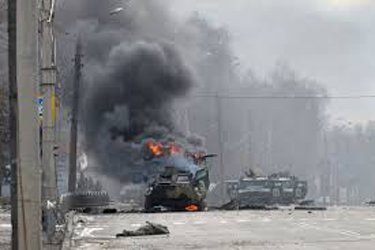Iranian President Mahmoud Ahmadinejad ran his re-election campaign against the old clerical elite, charging them with corruption, luxurious living and running the state for their own benefit rather than that of the people. He particularly targeted Ali Akbar Hashemi Rafsanjani, an extremely senior leader, and his family. Indeed, during the demonstrations, Rafsanjani’s daughter and four other relatives were arrested, held and then released a day later.
Rafsanjani represents the class of clergy that came to power in 1979. He served as president from 1989-1997, but Ahmadinejad defeated him in 2005. Rafsanjani carries enormous clout within the system as head of the regime’s two most powerful institutions — the Expediency Council, which arbitrates between the Guardian Council and parliament, and the Assembly of Experts, whose powers include oversight of the supreme leader. Forbes has called him one of the wealthiest men in the world. Rafsanjani, in other words, remains at the heart of the post-1979 Iranian establishment.
Ahmadinejad expressly ran his recent presidential campaign against Rafsanjani, using the latter’s family’s vast wealth to discredit Rafsanjani along with many of the senior clerics who dominate the Iranian political scene. It was not the regime as such that he opposed, but the individuals who currently dominate it. Ahmadinejad wants to retain the regime, but he wants to repopulate the leadership councils with clerics who share his populist values and want to revive the ascetic foundations of the regime. The Iranian president constantly contrasts his own modest lifestyle with the opulence of the current religious leadership.
Recognizing the threat Ahmadinejad represented to him personally and to the clerical class he belongs to, Rafsanjani fired back at Ahmadinejad, accusing him of having wrecked the economy. At his side were other powerful members of the regime, including Majlis Speaker Ali Larijani, who has made no secret of his antipathy toward Ahmadinejad and whose family links to the Shiite holy city of Qom give him substantial leverage. The underlying issue was about the kind of people who ought to be leading the clerical establishment. The battlefield was economic: Ahmadinejad’s charges of financial corruption versus charges of economic mismanagement leveled by Rafsanjani and others.
When Ahmadinejad defeated Mir Hossein Mousavi on the night of the election, the clerical elite saw themselves in serious danger. The margin of victory Ahmadinejad claimed might have given him the political clout to challenge their position. Mousavi immediately claimed fraud, and Rafsanjani backed him up. Whatever the motives of those in the streets, the real action was a knife fight between Ahmadinejad and Rafsanjani. By the end of the week, Khamenei decided to end the situation. In essence, he tried to hold things together by ordering the demonstrations to halt while throwing a bone to Rafsanjani and Mousavi by extending a probe into the election irregularities and postponing a partial recount by five days.
The key to understanding the situation in Iran is realizing that the past weeks have seen not an uprising against the regime, but a struggle within the regime. Ahmadinejad is not part of the establishment, but rather has been struggling against it, accusing it of having betrayed the principles of the Islamic Revolution. The post-election unrest in Iran therefore was not a matter of a repressive regime suppressing liberals (as in Prague in 1989), but a struggle between two Islamist factions that are each committed to the regime, but opposed to each other.
The demonstrators certainly included Western-style liberalizing elements, but they also included adherents of senior clerics who wanted to block Ahmadinejad’s re-election. And while Ahmadinejad undoubtedly committed electoral fraud to bulk up his numbers, his ability to commit unlimited fraud was blocked, because very powerful people looking for a chance to bring him down were arrayed against him.
The situation is even more complex because it is not simply a fight between Ahmadinejad and the clerics, but also a fight among the clerical elite regarding perks and privileges — and Ahmadinejad is himself being used within this infighting. The Iranian president’s populism suits the interests of clerics who oppose Rafsanjani; Ahmadinejad is their battering ram. But as Ahmadinejad increases his power, he could turn on his patrons very quickly. In short, the political situation in Iran is extremely volatile, just not for the reason that the media portrayed.
Rafsanjani is an extraordinarily powerful figure in the establishment who clearly sees Ahmadinejad and his faction as a mortal threat. Ahmadinejad’s ability to survive the unified opposition of the clergy, election or not, is not at all certain. But the problem is that there is no unified clergy. The supreme leader is clearly trying to find a new political balance while making it clear that public unrest will not be tolerated. Removing “public unrest†(i.e., demonstrations) from the tool kits of both sides may take away one of Rafsanjani’s more effective tools. But ultimately, it actually could benefit him. Should the internal politics move against the Iranian president, it would be Ahmadinejad — who has a substantial public following — who would not be able to have his supporters take to the streets.
The question for the rest of the world is simple: Does it matter who wins this fight?…
(T)here was no democratic uprising of any significance in Iran. Second, there is a major political crisis within the Iranian political elite, the outcome of which probably tilts toward Ahmadinejad but remains uncertain. Third, there will be no change in the substance of Iran’s foreign policy, regardless of the outcome of this fight. The fantasy of a democratic revolution overthrowing the Islamic Republic — and thus solving everyone’s foreign policy problems a la the 1991 Soviet collapse — has passed.
Depressing, and he may be right.






